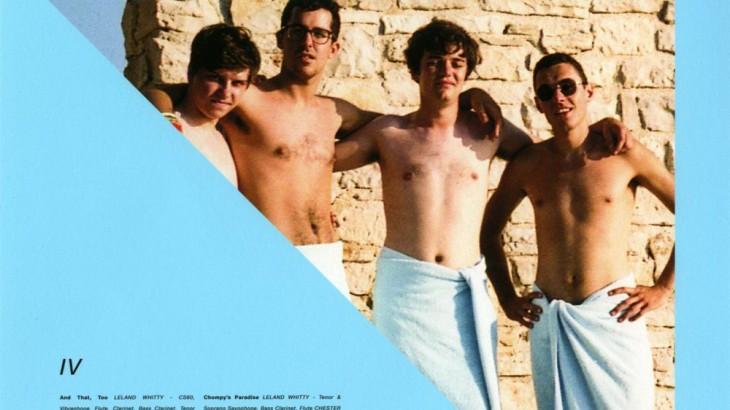Three Odd Future fans walk into a jazz school. No, this isn’t the setup of an obscure joke; it’s the story of how Toronto teenagers Matthew Tavares, Chester Hansen and Alex Sowinski combined their shared love of hip-hop with their training in jazz to form BADBADNOTGOOD. Despite being panned by their stubbornly orthodox teachers (one of whom wrote ‘sucksucksthissucks’ about them), the band has played with Tyler, the Creator, Frank Ocean and Earl Sweatshirt, among others, and has forged a reputation as one of the coolest, most imaginative names in modern jazz.
IV is BADBADNOTGOOD’s fourth album (notwithstanding 2015’s terrific Sour Soul collaboration with Ghostface Killah) and by far their most vast and exploratory. Much of IV exists at the border of chaos and control. Solid, structured foundations tremble under loose instrumental interludes. No track encapsulates this notion better than the turbulent Confessions Pt 2, which features acclaimed American multireedist Colin Stetson. Stetson’s musical expertise has seen him work with the likes of Arcade Fire and Bon Iver (not a bad CV) and Confessions Pt 2 shows exactly why. Blasting the bass sax like he was born with a reed in his mouth, Stetson’s playing is ferocious, yet cathartic. There are also moments of urgency, reminiscent of James Bond being pursued through the streets of New Orleans by a trio of villainous saxophonists.
Stetson is not the only collaborator on IV. Three very different vocalists lend their voices to the record, each adding depth and personality to the band’s impeccable instrumentals. This is rather new territory for BADBADNOTGOOD, whose only previous work with a vocalist was with Ghostface Killah on the Sour Soul record. Time Moves Slow features the inimitable Samuel T. Herring from Future Islands. Chester Hansen’s bass is prominent and lush throughout, and the elements of the track ebb and flow harmoniously, resulting in a moment of unusual purpose and clarity on an album fuelled by imagination.
Hyssop of Love showcases the immense talents of Chicago rapper Mick Jenkins, whose polished flow adheres to the shifting cadence of the music, proving yet again that BADBADNOTGOOD and hip-hop is a seriously good combination. This is true even of the tracks without vocals; Speaking Gently, for example, is manifestly an intricate, jazz-infused hip-hop track. Indeed, their ability to seamlessly merge classic jazz techniques with hip-hop instrumentals and manic improvisations makes BADBADNOTGOOD one of the most interesting bands in modern music.
Album opener And That, Too is smooth and sultry, chiming gently below regimented woodwind and percussion, before saxophonist Leland Whitty’s abrupt, roiling solo. It’s not the only time on IV that Whitty – who has joined the band properly after a long period as a touring member – lets loose. He’s presented with significant room to move on Chompy’s Paradise, as well as the album’s title track, on which the speed and dexterity of Alex Sowinski’s drumming is equally noteworthy. Sowinksi was recently recruited as a guest percussionist on 99.9%, the debut album from Haitian-Canadian producer Kaytranada. On Lavender, Kaytranada returns the favour, co-composing a track characterised by a deep, rubbery groove and warbling interjections of synth. I could listen to a whole album of this collaboration.
The third and final vocalist to feature on IV is another fine Toronto artist in Charlotte Day Wilson. Her low register and soulful delivery provides a lovely counterbalance to the soaring strings on In Your Eyes. It reveals a delicate side to BADBADNOTGOOD, which sits comfortably alongside the record’s diverse textures and sprawling instrumentation. On III, they crafted a definite sound and identity; on IV, they’ve expanded into purposeful ambiguity once more, inviting a disparate collection of guests to add their own flavours to the musical pot. The outcome is an album that thoroughly explores the manifold styles and capabilities of BADBADNOTGOOD. It expresses a swathe of moods and emotions, communicated as much through bold improvisation as structured melody. And isn’t that what jazz is all about?

